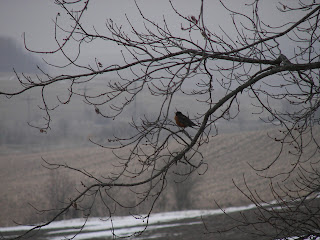The camels go marching one by one - hurrah! hurrah! A little more about arid gardens:
Besides allowing house plants a place in your garden without taking them out of pots, setting water loving plants in specific pots or raised beds in this garden allows you to water only those needing water. The Primrose might be a good example.
If you will notice, most arid gardens aren't packed full of fluffy and flowering plants.
To contrast with your other areas in the yard, you might consider a backdrop to your arid garden. This could be in the form of large stones, rock fence or tall plants.
Even though it might look good in the beginning, I never recommend bamboo or giant reed grass. They can be too invasive and impossible to stop.
Consider placing your new garden with one portion in part shade. This expands the plant options. Ferns for example.
Using raised beds as part of the overall look lets you have more options for different types of plants and their needs. Wood sides wouldn't look very arid and I suggest stone that coordinates with your ground mulch.
This is a simple little drawing (with a misspelled sedum) that I did just to give you a visual idea. It's certainly not "landscape design" quality I concede. A few suggestions:
- These should be tall ornamental grasses to form a backdrop. Examples: Calamagrostis a. 'Karl Foerster' or Miscanthus s. 'Gracillimus'
- A little shorter to soften the line. Examples: Miscanthus s. 'Dixieland' or Misconthus s. "Strietus" aka Zebra Grass. Plant the grasses far enough back from the stone wall so it won't drape over it. Both types of backdrop plantings could also be tall thin conifers such as Pinus nigra 'Arnold Sentinel' aka Fastigate Austrian Pine.
- Yucca should contrast against the backdrop grass. Plant where there is no traffic or need to work around. Examples: Yucca "filamentosa" aka Adam's needle and Yucca "glauca" aka soapweed yucca, Yucca faxoniana.
- Creeping junipers "Juniperus horizontalis" are the most common and a native of our area. Given the perfect conditions, they can spread very wide. One plant might suffice. I put it on the edge of the retaining wall to allow it to flow over the stone and around the statuary.
- There are many varieties of Sempervivum tectorum aka hens and chickens. Low growing and very slow to spread, they are ideal for designs or tapestry. They look great when tucked amid larger stones.
- Cactus and agaves should be planted where there is no traffic. There are several cold hardy: Escobaria leei, Echinocactus texensis, Agave neomexicana, Agave utahensis v. kaibabensis
- Low spreading sedums are numerous. There are also other ground covers that would work: Arenaria tetraquetra aka Spanish Sandwort, Paronychia kapela ssp. serpyllifolia aka Silver Nailwort,
- Examples: Sedum sieboldii October Daphne aka Stonecrop,
- This could be a large flat stone for a table or candle. It could also be a specimen plant such as Pinus ponderosa 'Mary Ann Haecock' aka Mary Ann Haecock Dwarf Ponderosa Pine.
- Low growing/spreading: Thymus praecox ssp. arcticus 'Coccineus' - Pink Creeping Thyme, Sedum dasyphyllum 'Major', Blue Tears Sedum.
- Low growing: Arenaria tetraquetra aka Spanish Sandwort, Escobaria (Coryphantha) vivipara aka Spiny Star. I saw someone use decorative kale/cabbage - it fit right into the landscape.
- Sedums, spurge and others. Examples: Kniphofia caulescens aka Blue-leaf Red Hot Poker, Sedum 'Thundercloud' PPAF aka Thundercloud Dwarf Sedum, Sedum 'Autumn Fire' aka Upright Stonecrop.

Experiment, follow your heart or that camel.
Although this big boy might just be a tag too much...











































